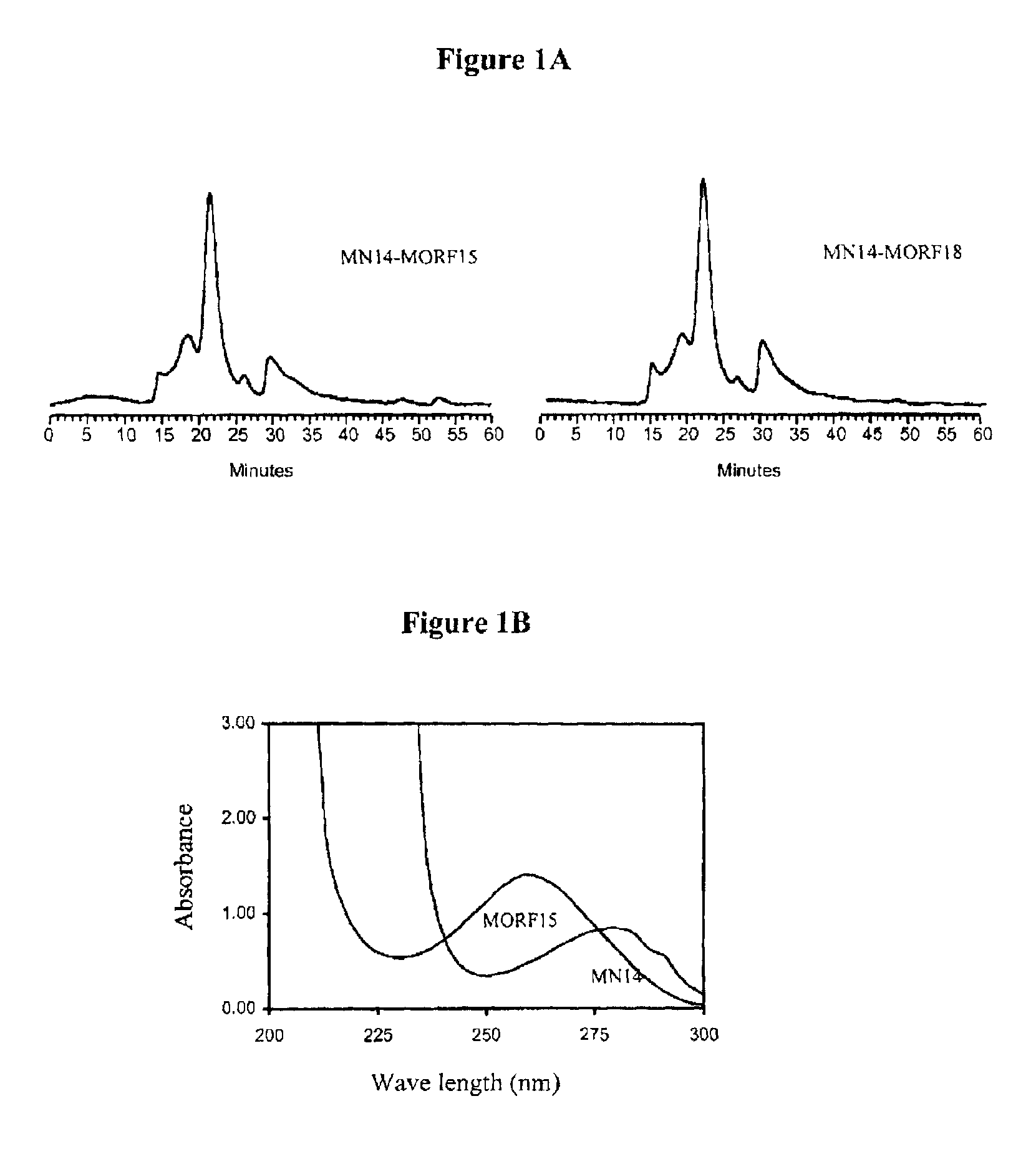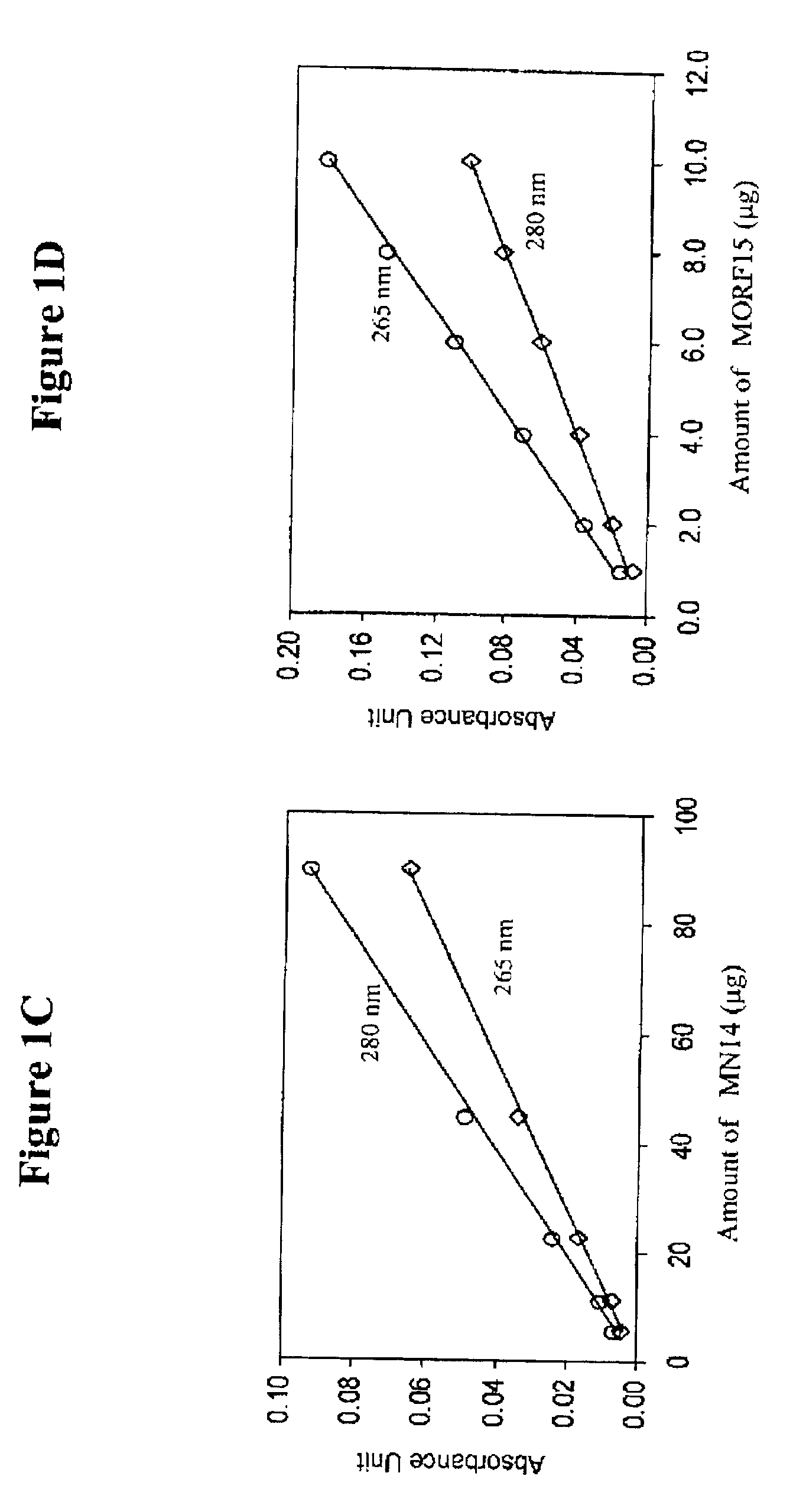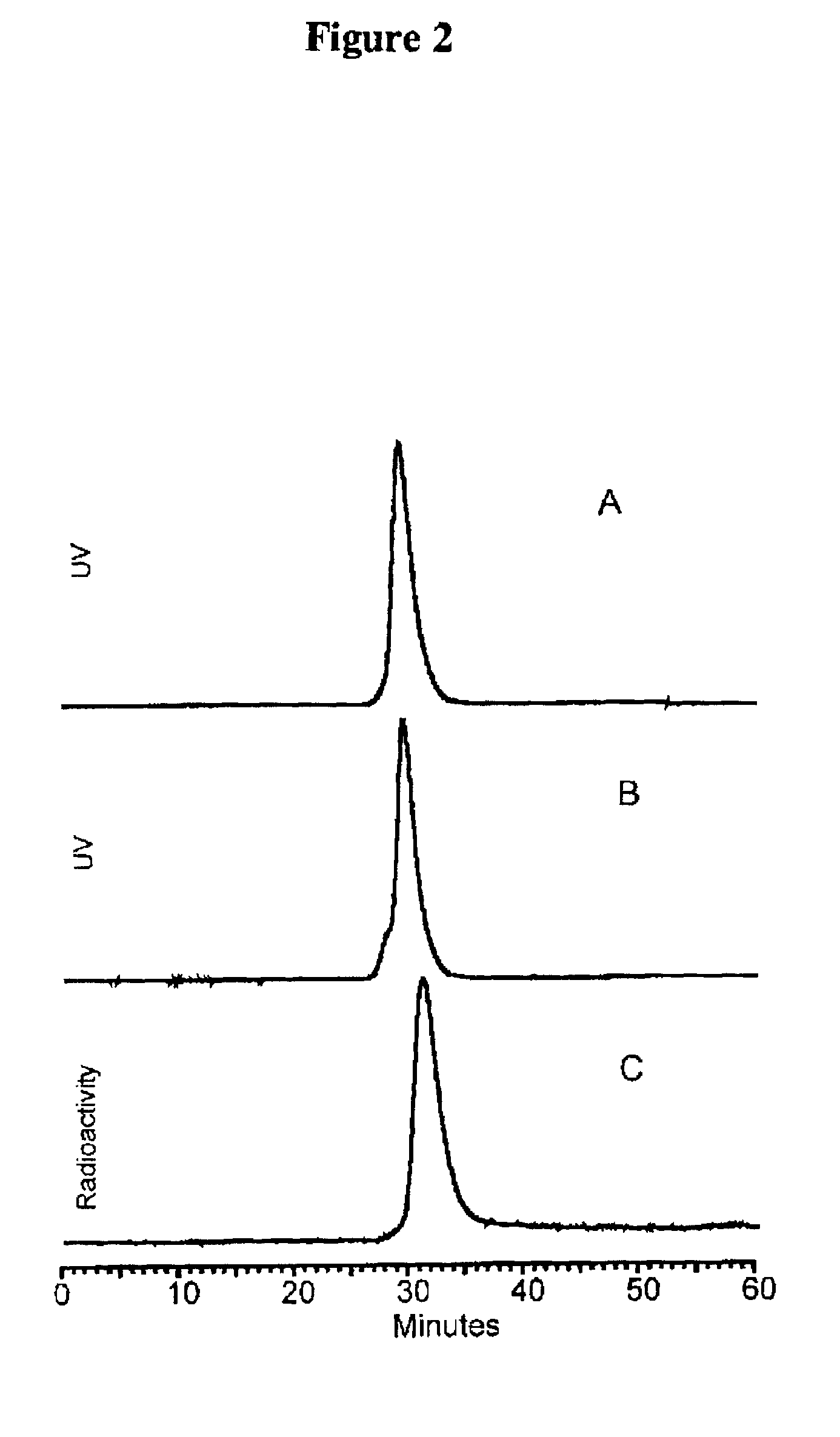Morpholino imaging and therapy
- Summary
- Abstract
- Description
- Claims
- Application Information
AI Technical Summary
Benefits of technology
Problems solved by technology
Method used
Image
Examples
example 1
Coupling of MN-14 with MORF15 AND MORF18
[0076]A solution of murine anti-CEA IgG antibody MN-14 (IgG1 subtype, MW 150-kDa) was prepared at a concentration of 1000 μg / 83 μL in phosphate buffered saline (pH 7.0-7.2) and was conjugated with either MORF15 (500 μg / 250 μL) or MORF18 (600 μg / 250 μL) in 2-(N-morpholino)ethane sulfonic acid (MES), pH 5.0, in the presence of 1-ethyl-3(3-dimethylaminopropyl)carbodiimide (EDC) in water (1000 μg / 50 μL). The above mixture was incubated at room temperature for at least 1 hour.
[0077]Purification was achieved on a 0.7×20 cm Sephadex G-100 column with 0.05 mol / L, pH 7.0 phosphate buffer as eluant. The concentration of the recovered fraction(s) was estimated with respect to MN14 by UV absorbance at 280 nm using the absorbance coefficient of 1.40 μL / μg.
[0078]The antibody-MORF conjugates were characterized in terms of antibody concentration and MORF group per molecule. Previously, groups per molecule were estimated by adding increasing amounts of radiola...
example 2
Coupling of cMORF15 and cMORF18 to NHS-MAG3
[0081]The conjugation of cMORF15 and cMORF18 with NHS-MAG3 was accomplished as described in Mardirossian, G. et al., J. Nucl. Med. 38:907-13 (1997) and Wang, Y. et al. Bioconj. Chem. 12:807-816 (2001). NHS-MAG3 powder (410 μg) was conjugated to both cMORF15 and cMORF18 (880 μg / 200 μL) in 0.2M HEPES, pH 8. Fifty microliters of HEPES was added to the resulting mixture and incubated for 4 hours. CMORFs (880 μg) were dissolved in 250 μl of 0.2 M HEPES buffer (pH 8.0) and were added to a vial containing 1150 μg of solid NHS-MAG3. After vortexing, the mixture was incubated at room temperature for at least 1 hr. The molar ratio of MORF18 to NHS-MAG3 was about 1:20. The incubated solution was separated on a 0.7×20 cm column of P4 with an eluant of 0.25 M ammonium acetate buffer, pH 5.2. The concentration with respect to cMORF of the recovered fractions were estimated by UV absorbance at 265 nm using an absorbance coefficient of 31 μL / μg. The peak ...
example 3
Radiolabeling of cMORF15-MAG3 and cMORF18-MAG3
[0083]Twenty-five microliters of cMORF15-MAG3 and cMORF18-MAG3 (0.25 M ammonium acetate, pH 5.2) was mixed with 6 μL sodium tartrate solution (50 mg / ml of fresh sodium tartrate in 0.5 M sodium bicarbonate, 0.25M ammonium acetate, 0.18 ammonium hydroxide, pH 9.2). This was followed by adding 20 μL of about 5 mCi of 99mTc-pertechnetate generator eluant. Finally, 2 μL tin(II) chloride (1 μg / μL in 10 mM HCl; Sigma) was quickly added by agitation. The conjugates were capped and placed in a boiling water bath for 20-30 min.
[0084]After 5-15 minutes at room temperature, the labeled-cMORFs-MAG3 was purified on a P4 column (0.7×20 cm) with 0.05 M phosphate buffer, pH 7 as the eluant. The peak was identified by counting fractions in a dose calibrator. The purified product was analyzed by size-exclusion HPLC using a Superose-12 (Pharmacia, Piscataway, N.J.). FIG. 1 represents a size exclusion HPLC radiochromatogram showing that the peak-times for ...
PUM
| Property | Measurement | Unit |
|---|---|---|
| Mass | aaaaa | aaaaa |
| Mass | aaaaa | aaaaa |
| Mass | aaaaa | aaaaa |
Abstract
Description
Claims
Application Information
 Login to View More
Login to View More - R&D
- Intellectual Property
- Life Sciences
- Materials
- Tech Scout
- Unparalleled Data Quality
- Higher Quality Content
- 60% Fewer Hallucinations
Browse by: Latest US Patents, China's latest patents, Technical Efficacy Thesaurus, Application Domain, Technology Topic, Popular Technical Reports.
© 2025 PatSnap. All rights reserved.Legal|Privacy policy|Modern Slavery Act Transparency Statement|Sitemap|About US| Contact US: help@patsnap.com



